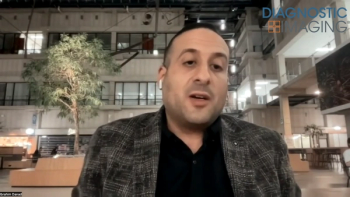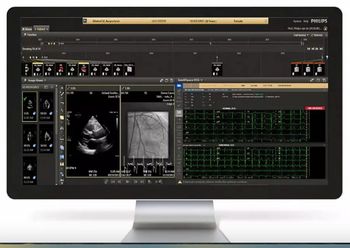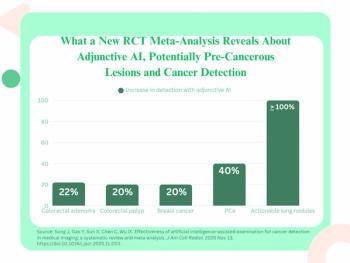
Ultrasound Works Well for Follow-up on Digital Breast Tomosynthesis
Ultrasound is an effective follow-up strategy for masses pinpointed with DBT, potentially side-stepping the need for digital mammography and lower radiation exposure.
Masses identified on screening digital breast tomosynthesis (DBT) can be safely and effectively evaluated with ultrasound, new research has revealed.
In a study published earlier this month in the
“DBT has been shown to be superior to conventional views in the diagnostic setting…[it is possible] women who already underwent screening DBT may be receiving unnecessary digital mammography prior to ultrasound imaging,” wrote the team led by Jennifer Porembka, M.D., assistant professor of radiology at UTSW.
Even though screening DBT has been found to reduce recalls, follow-up is still warranted in some instances. In their retrospective review study, Porembka’s team examined whether ultrasound by itself could be an effective modality in further investigating different types of lesions identified on DBT.
To make this determination, they examined 266 non-calcified lesions pinpointed with DBT in 247 women and calculated the how many and what kinds of lesions were sent for ultrasound follow-up. These lesions, located during January 2014 and December 2016, included focal asymmetries, masses, architectural distortions, and asymmetries.
Based on their analysis, the team determined ultrasound was used for follow-up in 69 percent of cases – eight times more than the chances of digital mammography and ultrasound being used together. They also found that ultrasound alone did a better job of identifying true lesions than masses analyzed by the combination of digital mammography and ultrasound. This outcome confirms that ultrasound can sufficiently evaluate masses picked up by DBT, they said.
Using ultrasound by itself for follow-up was less effective with architectural distortions and focal asymmetries, Porembka’s team determined. The detection rate in these cases was 44 percent and 25 percent, respectively.
Overall, however, the team concluded these findings can guide breast screening follow-up in a way that will reduce unwarranted exposure for some women.
“Our results suggest that digital mammography following a screening recall with DBT may be beneficial for certain lesion types, including asymmetries and focal symmetries, while lesion types, such as masses and architectural distortion may be resolved entirely by ultrasound,” the team concluded. “The implication of our findings is that we can save the women unnecessary radiation and unnecessary cost of digital mammography by utilizing ultrasound alone in the evaluation of recalled masses.”
Newsletter
Stay at the forefront of radiology with the Diagnostic Imaging newsletter, delivering the latest news, clinical insights, and imaging advancements for today’s radiologists.


























